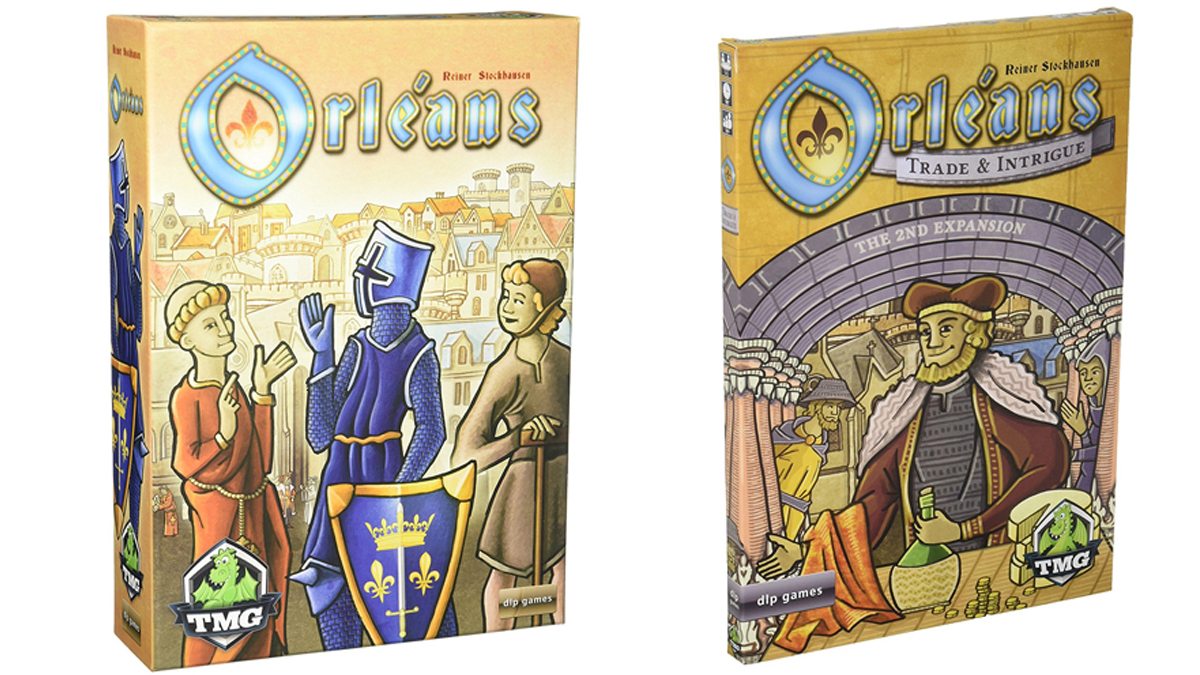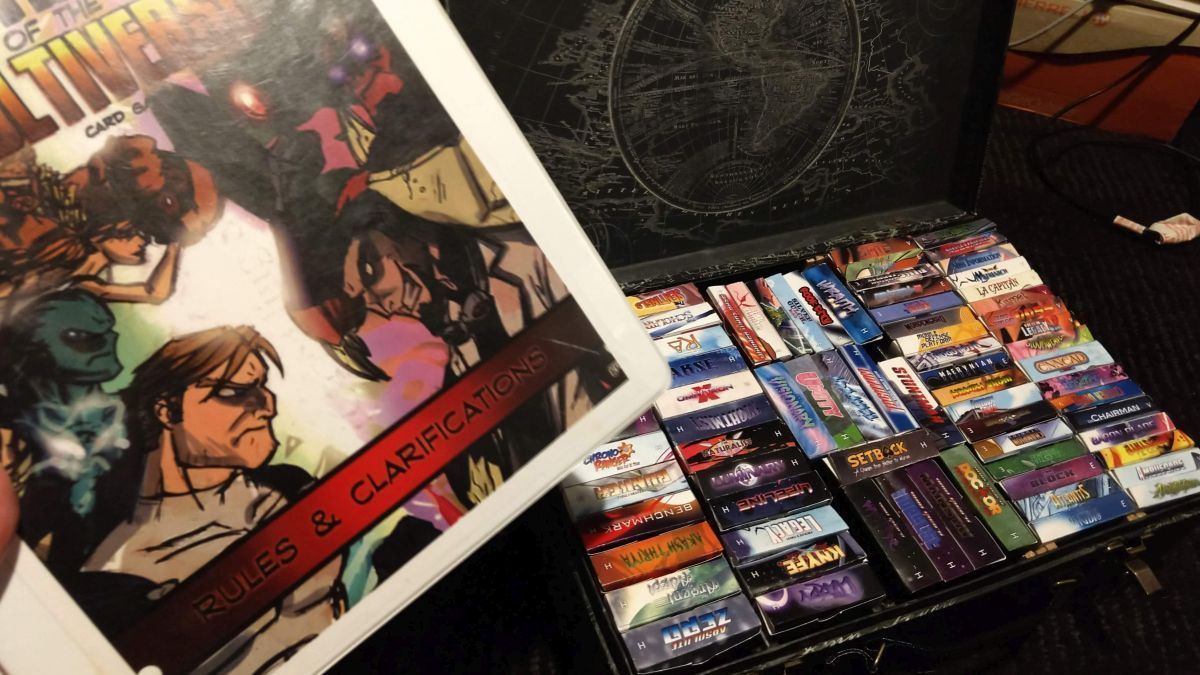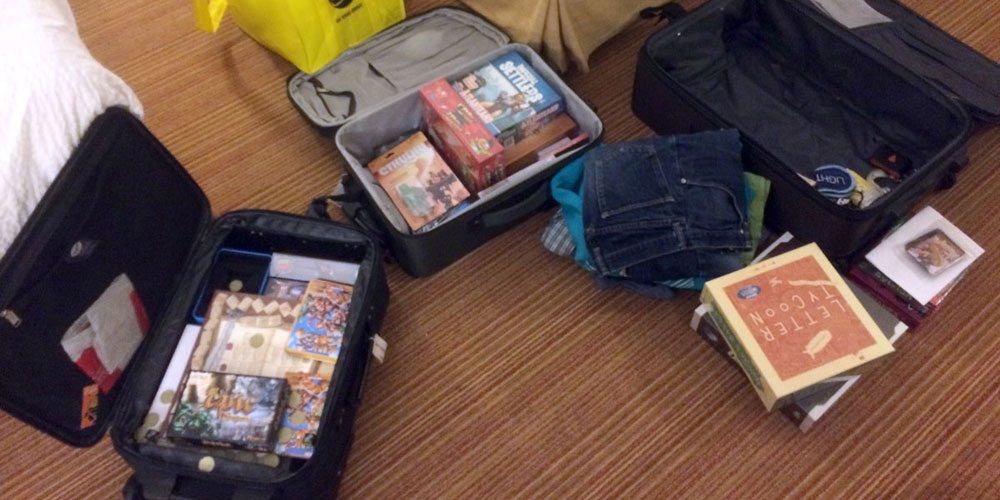
 Overview: Which stinks more, a circus tent or a canoe? Which would you take to a lonely deserted island, a phonograph or a potted flower? However you answer the question, you want to rise as high as you can in the ranks — but if you’re too obvious, then you’ll be found out. Ranking is a fun party game of opinions and bluffing.
Overview: Which stinks more, a circus tent or a canoe? Which would you take to a lonely deserted island, a phonograph or a potted flower? However you answer the question, you want to rise as high as you can in the ranks — but if you’re too obvious, then you’ll be found out. Ranking is a fun party game of opinions and bluffing.
Players: 3 to 5
Ages: 13 and up (younger kids can play but you may need to screen the questions)
Playing Time: 30-45 minutes
Retail: $39.95
Rating: Near the top rank, but loses some points for execution.
Who Will Like It? This one takes some of the kibbitzing and silly arguments from a game like Apples to Apples and throws in an interesting bluffing mechanic like Balderdash, so fans of party games and deception will enjoy this one.
Theme: There’s not really a specific theme to the game: it’s more of a conversation-starter due to the questions included, so your experience will vary depending on what questions are asked.
Components:
The game has a lot of punch-out cardboard, and a few wooden tokens:
- 1 tower (two interlocking cardboard pieces)
- 46 two-sided question tiles (the little flag at the top of the tower)
- 120 square picture tiles
- 5 player tiles (a king’s face, different colored backgrounds)
- 5 wooden scoring markers (arrows)
- 20 wooden guess markers (crowns, in 5 different colors)
- 1 cloth bag for questions
Each of the picture tiles simply has a picture of an object on it — sort of like Blurble — and the Ranking logo on the back. The question tiles simply have a little flag with a question on it, and there’s one question on each side. (There’s a little red or blue flag in the corner; you can decide whether to use the red side or blue side before you play, although there’s not really any difference in the type of questions of either color.)
The components are fine — good heavy cardboard and pretty standard quality wooden bits — but I can’t help feeling like this game would be easier to manage (not to mention more portable) with cards rather than tiles.
Gameplay:
All of the object tiles are mixed up, face-down, and each player takes six of them. In addition, each player takes their player token and places it in front of them so everyone knows what color they are, and places their scoring marker at the bottom of the tower. Finally, each player takes a voting marker in each of the colors of the other players.
For each round, a question tile is drawn at random from the bag and placed at the top of the tower. Each player picks one of their pictures that they feel best answers the question, and puts it face-down in the middle. Enough tiles are added from the supply so there are seven tiles total. These are mixed up, then turned face-up and placed in a row next to the “3” on the tower.
In clockwise order, each player compares two tiles and then the other players place guesses. To compare two tiles, they must be on the same row, and not on the top or bottom row. The active player declares one a better fit for the question, and moves it up one rank, and the other down one rank. For instance, in the photo above, a player has decided that passports are more often found by customs officers than pianos, so the passport moved up to “4” and the piano moved down to “2.” You have to give a reason (however shaky) for why you’re ranking the objects this way.
Once the active player has compared two tiles and moved them, the other players may place a guess marker of the active player’s color on any of the picture tiles (not just the two that were compared). The object here is to guess which picture belongs to the player who just moved things around. Once a guess marker has been placed, it stays on that picture for the rest of the round.
Players continue ranking and guessing until at least one tile is on the top row and one is on the bottom. Players then reveal which tiles were theirs. You get points equal to the final ranking of your tile — but you subtract any guess markers that match your color. For instance, if your picture ended up on rank 5 but had two guess markers of your color on it, then you get 3 points. (Guess markers of another player’s color don’t affect your score.)
The scoring track is also the tower itself: you move up the tower, and when you get to the top, you turn the arrow around and go back down until you’re off the bottom of the tower.
The tiles are cleared, a new question is drawn, everyone draws one more picture tile, and the game continues. The goal is to be the first player off the bottom of the tower.
Conclusion:
The gameplay in Ranking is very simple and can be taught in a few minutes, but it can lead to a whole lot of laughter and some clever maneuvering. Since your final score each round is based on both your position and whether people guessed your tile correctly, you can’t be too obvious about moving yourself up to the top. One of my gamers was really good at bluffing, voting up a snowboard as something that was more likely to be in a fairy tale — it hit the top rank, and we all guessed it must be his. Instead, his tile reached rank 4 and earned him more points than the snowboard would have because of all the guess markers.
The game can also lead to a lot of funny debating, as you try to prevent people from moving your own tile down (again, without giving away too much). We had a very contentious round about what would be more often found at a flea market, with airplanes and submarines creeping up the list and my poor Pharaoh’s mask getting bumped down toward the bottom. Even without the spoken explanations, the game can be pretty fun, but it’s best with a crowd that can revel in the absurdity of the juxtapositions.
I’ve tried the game out with my kids, too: they’re younger than the recommended age (13) but it still works all right. For them, the tricky part is knowing how to bluff — and learning how to spot when I’m bluffing. Still, it may be a great game to learn about bluffing because it doesn’t require other details the way poker does.
My only real complaint is with the execution. As I said above, the tiles are cute but it makes the game bigger than it probably needs to be. Plus, when you start you have to turn all the tiles over and mix them up so that nobody knows who has what: this would be so much easier with a stack of cards. Rio Grande is using a standard-sized game box for many of their games now, with a four-well cardboard divider, and the generic setup doesn’t really fit the components of Ranking. For one, the two tower segments don’t fit inside the wells, so they kind of sit on top instead. These complaints shouldn’t sway you from trying out the game if you’d like a fun party game, but it does mean that I’m less likely to stash it in my bag for playing on the go.
Overall, a light-hearted game that’s easy to teach, quick to play, and features a clever scoring mechanic. If you like bluffing your opponents while trying to figure them out, Ranking is worth a try.
Wired: Deception, deduction, and (goofy) debates make for a very fun experience.
Tired: Odd choice of components makes the game a little clunky.
Disclosure: GeekDad received a review copy of this game.







